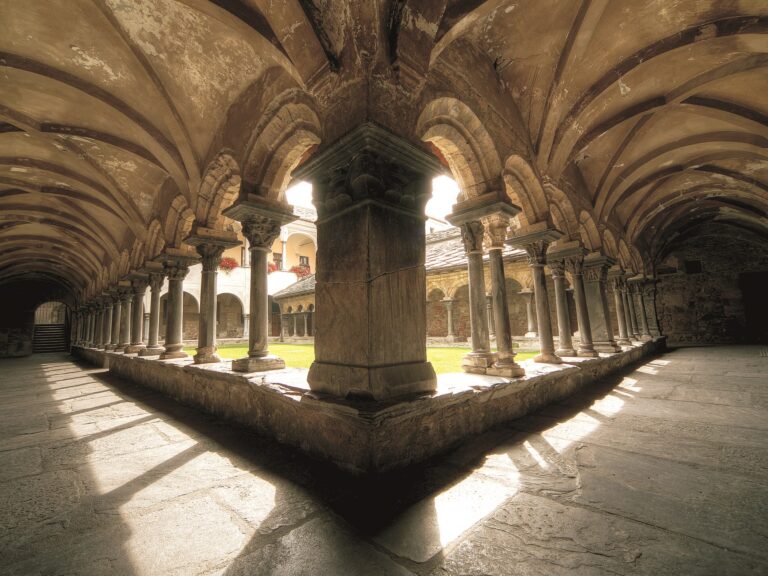Some places feel like time stands still. And some stories, though written thousands of years ago, still speak to us with powerful clarity. One of these is the Sacrifice of Isaac—a biblical tale that has crossed centuries, religions, and human hearts. A story of faith, fear, obedience, and ultimately, salvation.
But what’s truly surprising is where this story reappears—carved in stone, alive and well—in the heart of the Aosta Valley, nestled in the Romanesque cloister of Sant’Orso in Aosta.
Yes, even in the Alps, even in this small borderland region of mountains and silence, you’ll find a piece of Genesis. And that piece says a lot—not just about faith, but about us.
A Capital That Tells Everything
The cloister of the Collegiate Church of Sant’Orso is one of the most evocative places in all of the Aosta Valley. Built between the 11th and 12th centuries, it’s a Romanesque gem. Walking through its columns feels like leafing through a book made of stone.
Among all its capitals, one stands out: the scene of Abraham raising a knife, ready to sacrifice his son Isaac. But just in time, an angel appears to stop him. The gesture is frozen. The knife never falls. Life is spared.
That scene, carved with striking simplicity, speaks volumes. It’s dramatic and essential. It shows what it means to have faith—tested to the limit. And yet, it’s also a scene of mercy and hope.
From Mount Moriah to the Alps
According to Genesis, the sacrifice takes place on Mount Moriah—a remote, rugged, silent peak. And if you know the Aosta Valley, you know that the alpine landscape here is remarkably similar. Climbing up these mountains is also about leaving the noise behind. It’s about finding yourself. Listening.
The Aosta Valley isn’t just a land of peaks—it’s a land of faith. Its mountains are dotted with sanctuaries, chapels, and crosses, sacred places where people seek something beyond the visible. And often, they find it in the silence, the effort, and the height.
That’s why the story of Isaac also feels like a story of this land. Not just because it’s carved into the stones of Sant’Orso, but because the spirit of the tale—its trials, its ascent, its moment of grace—still lives here among the Alps.
An Ancient Story. A Timeless Message.
Abraham’s gesture has often been seen as an act of blind obedience. But it’s also a moment of deep conscience. God doesn’t want death. He wants trust. And in the most painful moment, He offers a way out.
In times like ours—when certainty is rare, identity is fragmented, and questions come faster than answers—the sacrifice of Isaac still speaks to us. It reminds us that every era has its test, its uphill climb, its blade to be stopped.
And the Aosta Valley—with its culture carved into the stone and written into the landscape, with its quiet, enduring spirituality—is the perfect place to rediscover this truth.
Visiting Sant’Orso: A Journey Through History
If you’re in Aosta, don’t miss the Collegiate Church of Sant’Orso. It’s more than just a church. It’s a cultural and spiritual landmark. It’s where Romanesque art meets medieval faith. Where the Bible meets the Alps. Where heaven and earth come a little closer.
Walking through the cloister, gazing at the capitals, standing in front of the Sacrifice of Isaac—it’s the kind of experience that stays with you. You don’t need to be religious to feel its weight. You just need to be human.
Because, like all great stories, the Sacrifice of Isaac doesn’t just belong to religion. It belongs to our culture, our memory, and our shared sense of meaning.
And maybe, just a little, it belongs to each of us.
Want to Know More? Let’s Connect.
Planning a visit to Aosta or researching Romanesque art?
Have questions about Sant’Orso or the Sacrifice of Isaac capital?
👉 Contact us directly at [your email] or through the form on our Contact Page.
We’d love to help you discover the stories carved in stone.


